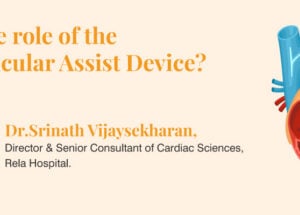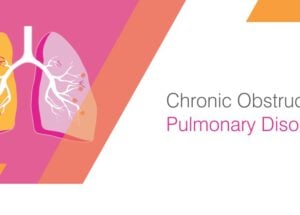Preeclampsia: Symptoms, Risks, and Prevention for You and Your Baby
April 18, 2025

Preeclampsia, also known as toxemia, usually affects pregnant persons during the second half of their pregnancy. In preeclampsia, blood pressure is high for the pregnant person. If treatment for high blood pressure is not provided, it can prove to be harmful for both the pregnant person and the baby. It affects roughly 5 percent of pregnancies.
The condition is generally diagnosed after the 20th week of pregnancy. It might also occur earlier, early-onset preeclampsia, or after delivery, postpartum preeclampsia.
Eclampsia, the severe progression of this condition, occurs during pregnancy or rarely after. In this condition, high blood pressure may turn into seizures.
Preeclampsia vs Eclampsia
Preeclampsia and eclampsia are in the spectrum of high blood pressure disorders that can affect a pregnant person during pregnancy. There are different types of preeclampsia. At the milder end of the spectrum, a pregnant person can experience gestational hypertension. This occurs when the pregnant person who has had a normal BP develops high blood pressure when they’re more than 20 weeks pregnant. BP will return to normal within 12 weeks of delivery. Severe gestational hypertension in pregnant persons can lead to preeclampsia.
Preeclampsia occurs at or after 20 weeks of pregnancy in a pregnant person with a normal blood pressure before their pregnancy. If the condition is severe enough that it affects the brain’s functions, causing seizures or even coma in some cases, then it is eclampsia.
What Causes Pre-Eclampsia?
Though the exact cause of preeclampsia remains unknown, most experts have said that this might occur when there is an issue with the development of the placenta. Blood vessels that supply blood to the placenta are narrower than others and respond differently to hormone signals. It limits blood flow to the placenta.
The narrowness might occur due to:
- Blood vessel damage
- Blood flow insufficiency to the uterus
- Issues in the immune system
- Genetic factors
What are the Preeclampsia Signs and Symptoms?
The initial symptoms that a pregnant person might experience:
- High blood pressure (hypertension)
- Protein in the urine (proteinuria)
With the progression of preeclampsia, the pregnant person might experience edema (swelling) or fluid retention in the hands, feet, ankles, and face. Although swelling is common during pregnancy, with preeclampsia, the pregnant person may experience sudden and severe edema.
Later, the pregnant person may experience:
- Sudden and severe edema (swelling)
- Blurred vision
- Severe headaches
- Shortness of breath
- Rapid weight gain
- Vomiting
- Decreased urine output
What are the Risk Factors of Preeclampsia?
- First Pregnancy with a new partner or first-ever pregnancy
- Family history
- Pregnancy after 40 years of age
- Considerable gap between pregnancies
- History of certain conditions
- Chronic high blood pressure
- Migraines
- Diabetes
- Multiple pregnancies at the same time
Complications
Preeclampsia poses significant health risks to both the mother and baby if left untreated. One of the most concerning risks is eclampsia, which involves seizures and may even result in coma or death in rare cases. In some situations, seizures can develop suddenly, without any prior warning signs like high blood pressure or headaches.
For mothers, complications may include organ damage affecting the kidneys, liver, lungs, heart, or even the brain. HELLP syndrome, a severe condition involving hemolysis, elevated liver enzymes, and low platelet count, may also develop, often presenting with vague symptoms like nausea, discomfort in the upper abdomen, or an overall feeling of illness. Such complications pose serious risks and demand urgent medical attention.
The risk of placental abruption is higher, a condition in which the placenta separates from the uterus before delivery. This can cause heavy bleeding, posing a critical threat to both mother and child.
Babies affected by preeclampsia may experience fetal growth restriction due to limited blood flow and nutrients through the placenta. Preterm birth is another common outcome, sometimes planned as part of treatment, but it carries risks such as developmental delays and respiratory issues.
Long-term, preeclampsia can have lasting effects. Women who have had the condition, especially more than once, face an increased likelihood of heart disease, chronic high blood pressure, kidney problems, and even diabetes later in life. The condition may also recur in future pregnancies.
How is Preeclampsia Diagnosed?
Your healthcare provider may recommend a few tests to diagnose your health and that of your baby.
- Blood tests to assess the functioning of the pregnant person’s liver and kidneys.
- Blood tests to assess the blood platelet levels
- Blood tests to assess the RBC in the pregnant person
- Weight of the pregnant person
- Ultrasound
- Fetal heart rate assessment
- Physical examination to assess swelling
What is Preeclampsia Medication and Treatment?
The most recommended high blood pressure treatment or preeclampsia treatment is to deliver the baby.
It is vital not to consume any blood pressure medication, vitamins, or supplements without consulting your doctor first. Physicians might recommend blood pressure medication during your labour to reduce blood pressure. Do not go for home remedies for high blood pressure for treating Preeclampsia BP.
Prevention
Although preeclampsia cannot be fully prevented, specific steps can help lower the risk, particularly for those at higher risk. Your healthcare provider may advise specific steps based on your health history and risk factors.
One commonly recommended strategy is the use of low-dose aspirin (81 mg), which may be started in early pregnancy, typically after the first trimester, if you’re considered at high risk. This approach has been shown to modestly lower the chances of developing preeclampsia. However, it’s crucial to begin aspirin therapy only after consulting your doctor.
If your calcium levels are low, your provider might also recommend a daily calcium supplement to support a healthy pregnancy.
Along with medication, maintaining healthy lifestyle habits can contribute to reducing your risk. This includes:
- Controlling pre-existing health conditions, like high blood pressure or diabetes.
- Maintaining a healthy weight before pregnancy.
- Exercising regularly and staying active.
- Getting adequate rest and reducing stress.
- Following a balanced diet, limiting salt, and avoiding excess caffeine.
Early and consistent prenatal care remains one of the most important ways to monitor your health and catch any warning signs of preeclampsia before they become serious.
When Should I Visit the Doctor
It’s essential to keep all your prenatal appointments so your healthcare provider can monitor your blood pressure and overall health. If you experience any of the following, you should contact your doctor right away or go to the nearest hospital:
- Severe or persistent headaches
- Blurred vision or seeing dark spots
- Sharp pain in the upper abdomen, especially on the right side
- Shortness of breath
- Seizure-like symptoms such as twitching or convulsions
If you’re ever unsure whether your symptoms are normal or cause for concern, especially during your first pregnancy, it’s always safer to call your provider for guidance.







